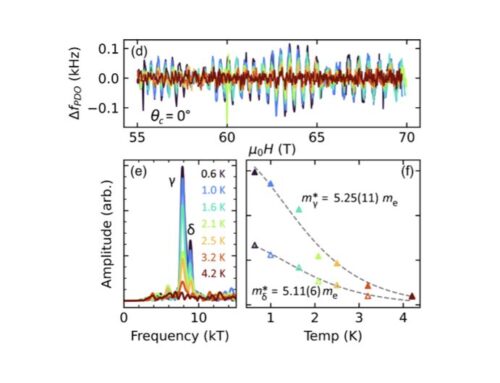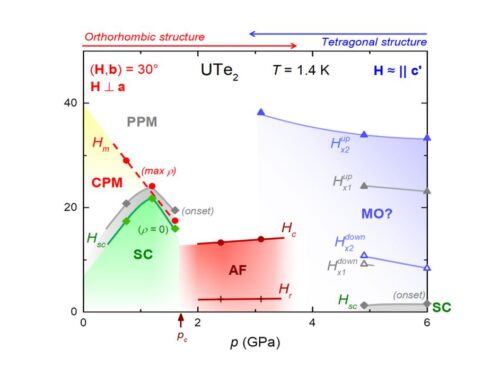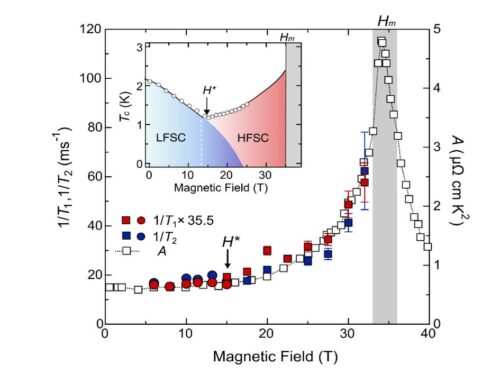Igor Vinograd and Marc-Henri Julien, LNCMI-Grenoble.
High-temperature superconductivity in the cuprates arises in close proximity to a charge density wave (CDW) phase. A challenge in the field is to understand how both phenomena compete and whether, behind pure competition, there is a more involved relationship between them. To tackle this question, various experiments have used temperature, magnetic field, hole-doping or uniaxial strain to tune the competition between CDW and superconducting phases. The effect of hydrostatic pressure, on the other hand, has been controversial, especially in the archetypal cuprate YBa2 Cu3 Oy, where high-field transport and zero-field x-ray scattering results have led to opposite conclusions.
In order to clarify this issue, we have used 17O nuclear magnetic resonance (NMR) with the aim to study both the low-field (shortranged) and high-field (long-ranged) CDW phases of YBa2 Cu3 Oy under a pressure of 1.9 GPa.
The main finding of this study is that the amplitude of both the short-range CDW and the long-range CDW are, at most, weakly weakened at 1.9 GPa. Nonetheless, quantitative analysis, taking the pressure-induced change in doping into account, shows that both the NMR and transport data are actually compatible with the proposal by Taillefer and coworkers that the increase in Tс upon increasing pressure arises from a concomitant disappearance of the CDW phase on the scale of 10 to 20 GPa. As a matter of fact, we find a clear increase of the onset field for long-range CDW order at 1.9 GPa (see Figure) that closely matches the concomitant decrease in the superconducting upper critical field Bс2. This shows that pressure affects both the CDW and superconductivity on the same footing.

Figure: Field dependence of the quadrupole splitting (produced by long-range CDW order) at 3 K for 0 and 1.9 GPa for a hole doping of p = 0.109. Lines are fits to a BCS-like order parameter, with the dashed red line corresponding to a fit excluding the highest field point to visualize the uncertainty in the saturation value of the splitting.
Nuclear magnetic resonance study of charge density waves under hydrostatic pressure in YBa2 Cu3 Oy, I. Vinograd, R. Zhou, H. Mayaffre, S. Krämer, R. Liang, W. N. Hardy, D. A. Bonn, and M.-H. Julien, Phys. Rev. B 100, 094502 (2019).
DOI: https://journals.aps.org/prb/abstract/10.1103/PhysRevB.100.094502





